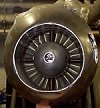 |
Front view of a WWII German Jet Engine. This engine was remarkably
advanced for its time. The design is almost identical to that of modern jet engines.
This engine had a useful lifetime of ~ 25 hours as materials, lubricants, and
resources to prolong their useful life were not available to the designers. This
engine were used in service near the end of the war and had a 100 - 200 MPH advantage over
allied propeller driven aircraft. |
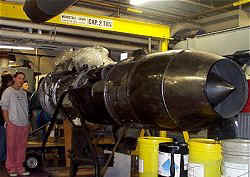 |
Side view of WWII German Jet Engine seen above. |
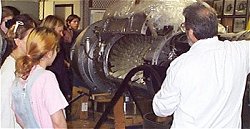 |
Dick Perdichizzi uses the cutaway section of the engine to explain how it
works. |
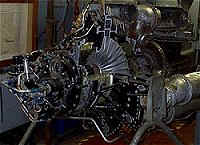 |
The Whittle engine was the British counterpart to the German engine seen
above. |
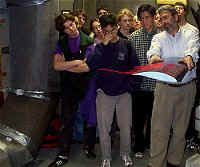 |
Dick Perdichizzi demonstrates how an airfoil works by placing a model foil
in a wind tunnel. The red strings help show direction of airflow and can be used to
see what happens when the angle of attack is increased and the wing stalls. |
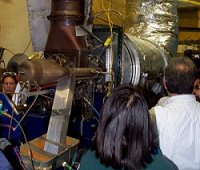 |
The gas turbine engine from a military helicopter is roughly the size of a
5 gallon bucket and puts out approximately 700 hp. At left, Dick Perdichizzi (right
side of photo) explains how the engine works. |







